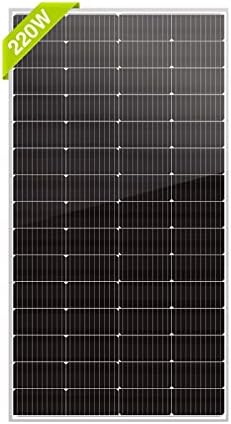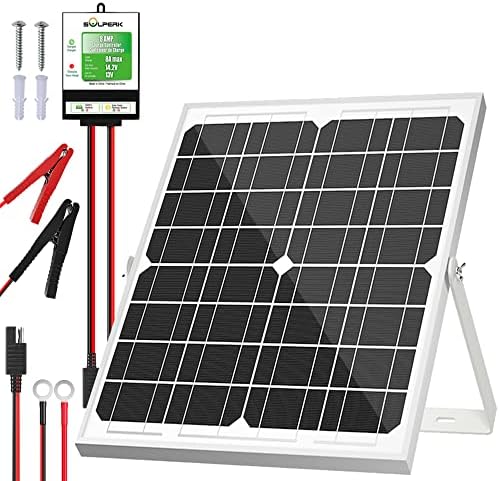# The Bright Side of the Bottom Line: Unpacking Solar Panel Costs
The first time I stood in the sunlight, gazing at the glimmering panels on my roof, I felt an overwhelming sense of pride and liberation. My off-grid lifestyle had hit a new high; I was generating my own electricity! However, that unforgettable moment was preceded by countless hours of research—comparing prices, understanding incentives, and sifting through endless information about solar panels. You see, when it comes to solar technology, being informed is your best ally. If you’re on the journey to harnessing solar energy, understanding the costs and how they work is key to making a sound investment. So, let’s shine a light on the various facets of solar panel costs while keeping it lively and engaging!
## The Cost Breakdown: What You Need to Know
When contemplating solar energy, the first question that pops up is, “How much does it actually cost?” While prices can differ widely based on various factors, understanding these elements can help demystify the subject.
### 1. **Installation Costs**
The installation is a significant portion of your overall solar panel expenses. The average cost of installed solar panels can range between $15,000 and $25,000, depending on the size of the system you need and your local market conditions. This cost generally includes:
– **Panel Purchase**: Prices for solar panels vary by brand and efficiency, ranging from $0.50 to $2.00 per watt.
– **Labor**: Skilled electricians and roofers are necessary for a successful installation. Their fees can run anywhere from $50 to $150 per hour.
### 2. **Government Incentives and Tax Credits**
Before you panic about the price tag, remember that federal, state, and local incentives can help offset costs significantly. The Federal Investment Tax Credit (ITC) allows you to deduct 26% of your solar installation cost from your federal taxes through 2022, with a gradual reduction in subsequent years. Some states and local governments may also offer additional rebates or grants.
### 3. **Financing Options**
Don’t let the upfront costs deter you! There are several financing options available to make solar power more accessible:
– **Solar Loans**: Financing through various lending institutions often allows you to install panels with little to no money down and pay monthly installments that might be less than your current utility bills.
– **Leasing**: If you prefer not to purchase the panels outright, leasing can be a viable option where you essentially rent the solar system, paying a monthly fee but benefiting from reduced electricity rates.
### 4. **Maintenance Costs**
While solar panels are designed to last for decades with minimal maintenance, it’s crucial to budget for occasional cleaning, repairs, and inverter replacements as needed. Monthly cleaning can be done for as little as $100, and inverters typically need replacement every five to ten years, costing between $1,000 and $3,000.
## The ROI Factor: Is It Worth It?
Talking about costs boils down to one important question: Is it worth it? According to the U.S. Department of Energy, homeowners see a return on investment (ROI) within 5 to 10 years, depending on the state and utility costs. After that, it’s a financial win!
### Factors Influencing ROI:
1. **Energy Savings**: Calculate how much you typically spend on your utility bill. The more you save monthly, the quicker your ROI.
2. **Home Value**: Studies show that homes with solar systems sell for around 4% more than homes without. An excellent bonus if you’re thinking of the long haul!
3. **Net Metering Benefits**: If your local utility has net metering, you can sell excess energy back to the grid, further improving your ROI.
## Pro Tips for Going Solar
Here are some pro tips to keep in mind as you navigate your solar journey:
### 1. **Research Local Incentives**
From tax credits to rebates, every bit counts! Make sure to check what your local and state governments offer to lighten the cost.
### 2. **Choose the Right Installer**
Don’t just go with the first installation company you find! Do your homework, read reviews, and ask for recommendations within your community. A skilled and trustworthy installer can save you headaches later.
### 3. **Think About Energy Storage**
While faster ROI is tempting, consider investing in a battery storage system. It can provide energy during nighttime or outages and can also yield higher savings.
### 4. **Monitor Your Production**
Use monitoring apps and platforms offered by most installation companies. Keeping an eye on your energy production can help you spot potential issues before they become costly.
## Expanding Your Knowledge
One of the most beneficial investments you can make is educating yourself further on solar energy. Books, online courses, or local workshops can enhance your understanding, making you an informed consumer and a savvy negotiator when discussing installation and financing options.
## Sustainability Beyond Costs
Beyond the numbers, switching to solar energy is an environmentally friendly choice. Each installed panel helps reduce carbon emissions and reliance on fossil fuels. It’s an investment not just for your wallet but for the planet too!
## Final Thoughts
Investing in solar panels can polarize opinions, but the facts speak for themselves. Despite the upfront costs that can initially seem daunting, the medium to long-term benefits far outweigh these concerns. With proper research and planning, you’ll be able to harness the sun’s energy efficiently and sustainably. The transition to solar power can truly transform both your lifestyle and your financial future, one ray at a time.
So, are you ready to unlock the bright side of the bottom line? The sun is waiting!



